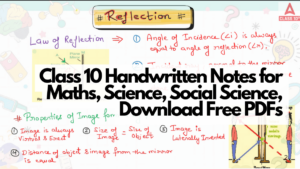The Uttar Pradesh Director General of Medical Education and Training (UPDGME) has issued admission guidelines for UP NEET PG Admission 2025 for the academic year 2025-26 on the official website, dgme.up.gov.in,
The authorities have posted numerous essential pieces of information, including online candidate registration, the state merit list, and qualifying criteria. Candidates who pass the NEET PG 2025 examination will be eligible for PG medical admissions throughout the state, while students with NEET MDS 2025 marks will be eligible for PG dental admissions. Read the full article to know about the eligibility and registration fee for the UP NEET PG, MDS Admission 2025
CHECK:- National Eligibility cum Entrance Test Results 2025
UP NEET PG Admission 2025
On the basis of NEET PG Scores, UPDGME conducts the admission process for admiting aspirants in to postgraduate courses such as MD, MS, Diploma, DNB, and MDS programs in government and private sector medical colleges, dental colleges, and autonomous state medical colleges in the state for the academic year 2025-26. The DGME will release the UP NEET PG merit list 2025 for admission to PG medical courses. The state merit list of registered candidates will be generated by weighting the candidates listed on the Director General, Medical and Health Services, Uttar Pradesh’s list of eligible doctors in the PMHS cadre. The state merit list of registered DNB and MDS applicants will be prepared based on the All India Rank.
Check :- NEET UG Final Answer Key 2025
UP NEET PG Admission 2025 Eligibility Criteria
Students must meet the following criteria to be admitted to courses:
- Only those who have passed the NEET PG-2025 and NEET MDS-2025 tests and have been declared qualified will be eligible for counselling.
- Only applicants who complete their internship by March 31, 2025, will be eligible to participate in the NEET MDS 2025 counselling.
- Only applicants who finished their internships by July 31, 2025 will be eligible to participate in the NEET PG-2025 (MD/MS/Diploma/DNB) counselling.
UP NEET PG counselling 2025 Fee
To participate in the UP NEET PG counselling procedure 2025, students must register online and pay the stipulated registration costs. The first, second, third, and fourth rounds of counselling will cost INR 3,000 each. Each candidate must register again for the stray round counselling process of UP NEET PG 2025. The registration cost for UP NEET PG counselling 2025 is non-refundable in any case.
Check:- NEET UG Scorecard 2025
UP NEET PG 2025 counselling and Seat Allotment process
After the counselling and seat allocation process is stated, candidates will be able to upgrade their seats from the first and second rounds of counselling to the third round of counselling. If any other seat is granted in accordance with the candidate’s reallocation option, the previously allotted seat will become vacant and will be assigned to any other eligible candidate. If no seats are reallocated, the candidate’s previous seat will remain unchanged.
CHECK:- NEET Topperlist 2025
During re-allocation, candidates should not select the option of the seat admitted in the previous cycle of counselling in the following cycle of counselling. Candidates who have been assigned to Government Medical Colleges/Dental Colleges/Institutions/Universities must finish the admission procedure by personally presenting at the allotted college and paying all of the specified fees in accordance with the system in place at the concerned Medical College or Dental College. Otherwise, the previously assigned seat will be automatically cancelled. The entire burden for this will fall on the candidate.









 Free Class 10 Worksheet Chapter-wise, Do...
Free Class 10 Worksheet Chapter-wise, Do...
 Class 10 Handwritten Notes for Maths, Sc...
Class 10 Handwritten Notes for Maths, Sc...
 CBSE Competency-Based Questions Class 10...
CBSE Competency-Based Questions Class 10...


















